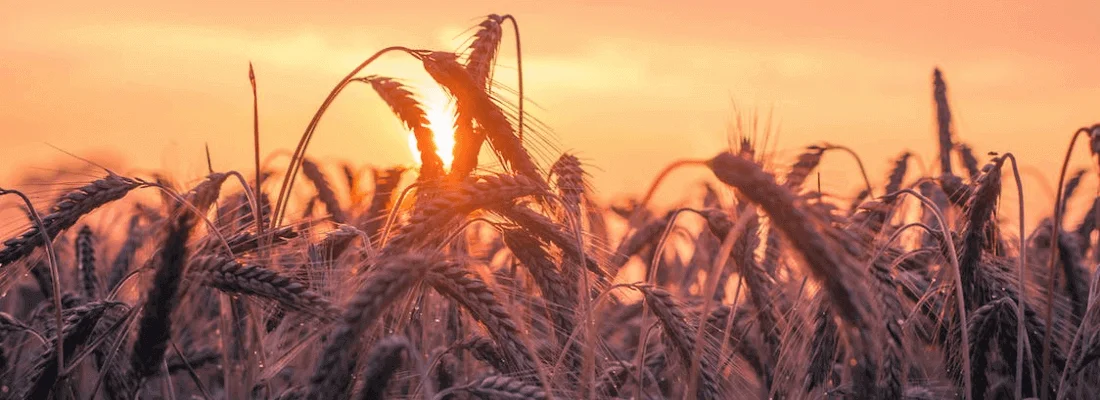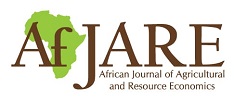


African Journal of Agricultural and Resource Economics (AfJARE)
A publication of the African Association of Agricultural Economists (AAAE)
Latest Publications
Can public expenditure on agriculture mitigate the effect of climate variability on agricultural credit in Africa?
This study investigates how public agricultural expenditure can mitigate the effect of climate variability on banks’ agricultural credit supply in sub-Saharan Africa.
Farmers’ willingness to pay for agricultural extension services in Limpopo province, South Africa
This study employs a binary probit model on a sample of 319 smallholder farmers in Thulamela and Collins Chabane municipalities to examine their willingness to pay for agricultural extension services.
Relationship between poverty and climate: Does climate variability drive rural poverty in Zimbabwe?
Zimbabwe has set poverty reduction targets in a changing climate, yet the implications of climate variability for poverty remain under-explored.
Effect of privatisation on the productivity of sugarcane out-growers in Dwangwa Cane Growers Limited, Malawi
This study examines the impact of privatisation on the productivity of smallholder sugarcane out-growers in Malawi using a case study of Dwangwa Cane Growers Limited (DCGL).
Adoption and yield impacts of improved groundnut varieties in Nigeria: Application of the potential outcomes framework
Using the potential outcomes framework, we estimate the influence of the adoption gap, adoption drivers and impact of adopting improved groundnut varieties (IGVs) on groundnut yield among smallholder farmers in Nigeria.
Effect of collective marketing on mango income among smallholder farmers in Mwala sub-county, Machakos County,Kenya
This study examined the effect of collective marketing on mango income for 226 smallholder farmers in Mwala sub-county. The study employed an endogenous switching regression model to account for selection bias from observed and unobserved farmer attributes.
Volume 19
Climate change and its pronounced effects have greatly disfranchised the livelihoods of aquafarmers. To leverage these negative effects of climate change, climate-smart aquaculture (CSA) practices have been developed for adoption by farmers. However, it is not known whether these practices have made any meaningful contribution to farmers in terms of their livelihoods and resilience to the vagaries of climatic change.
Using the potential outcomes framework, we estimate the influence of the adoption gap, adoption drivers and impact of adopting improved groundnut varieties (IGVs) on groundnut yield among smallholder farmers in Nigeria.
Volume 18 (2023)
Climate-smart agriculture (CSA) is viewed as a potentially effective intervention to address low agricultural productivity in Sub-Saharan Africa (SSA), while strengthening farmers’ capacity to adapt to the effects of climate change.
Improving local rice production capacity is a key element on the agenda of most countries in the West African Economic and Monetary Union (WAEMU).
Goat keeping is a common practice among rural farmers due to the adaptability of goats to harsh environments, their efficient forage conversion and rapid growth, and their multiple benefits, including the production of manure and high-quality milk.
Volume 17 (2022)
Cette étude analyse l’efficacité des producteurs de riz dans l’allocation des ressources dont ils disposent pour la production en recueillant des données transversales auprès de 255 producteurs dans le Centre-Ouest de la Côte d’Ivoire.
One of the three components of Rwanda’s flagship anti-poverty programme, Vision 2020 Umurenge (VUP), is the provision of credit to relatively poor households, nearly all of them farmers. In this paper we estimate the impact of the programme using high-quality household survey data from 2013/2014 and 2016/2017.
The use of novel feed ingredients from aquaculture is growing globally. However, their contributions to scalable and sustainable aquafeed solutions are unclear. New ingredients for feeds are desired in the framework of sustainability and a circular economy; thus, initiatives for implementing such novel ingredients are of interest to agricultural practitioners.


